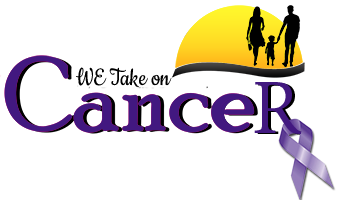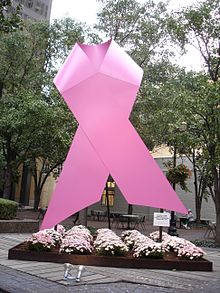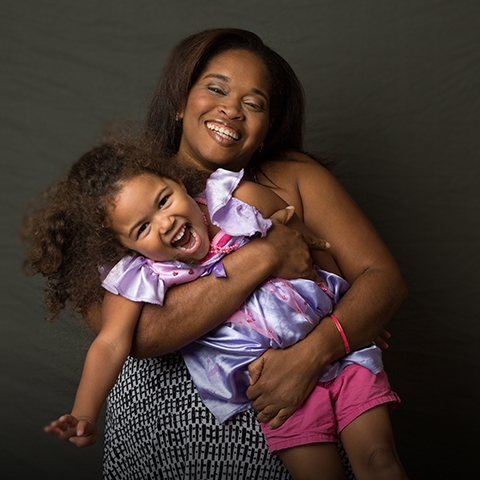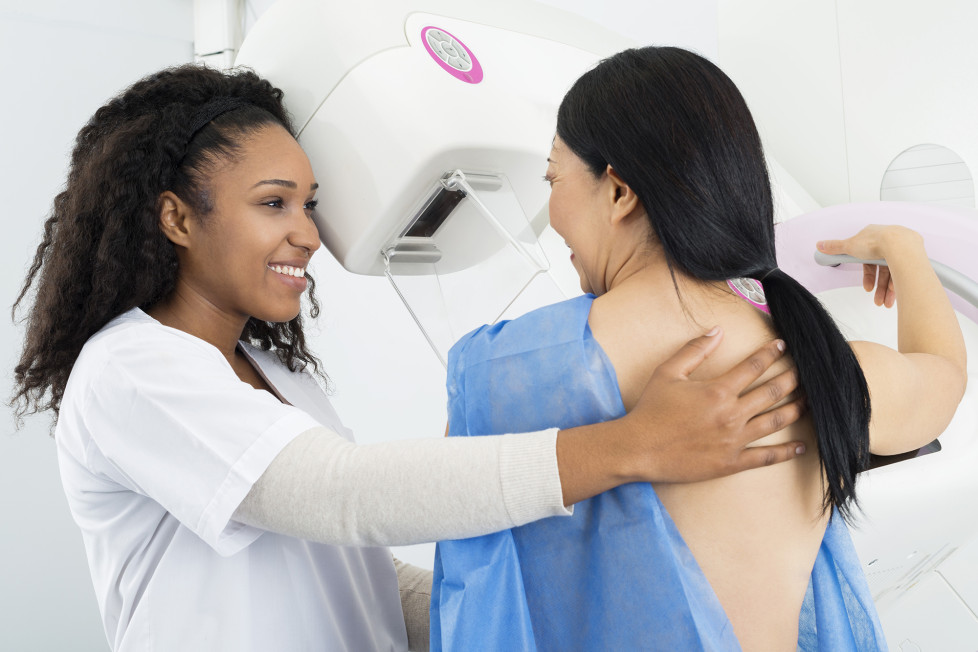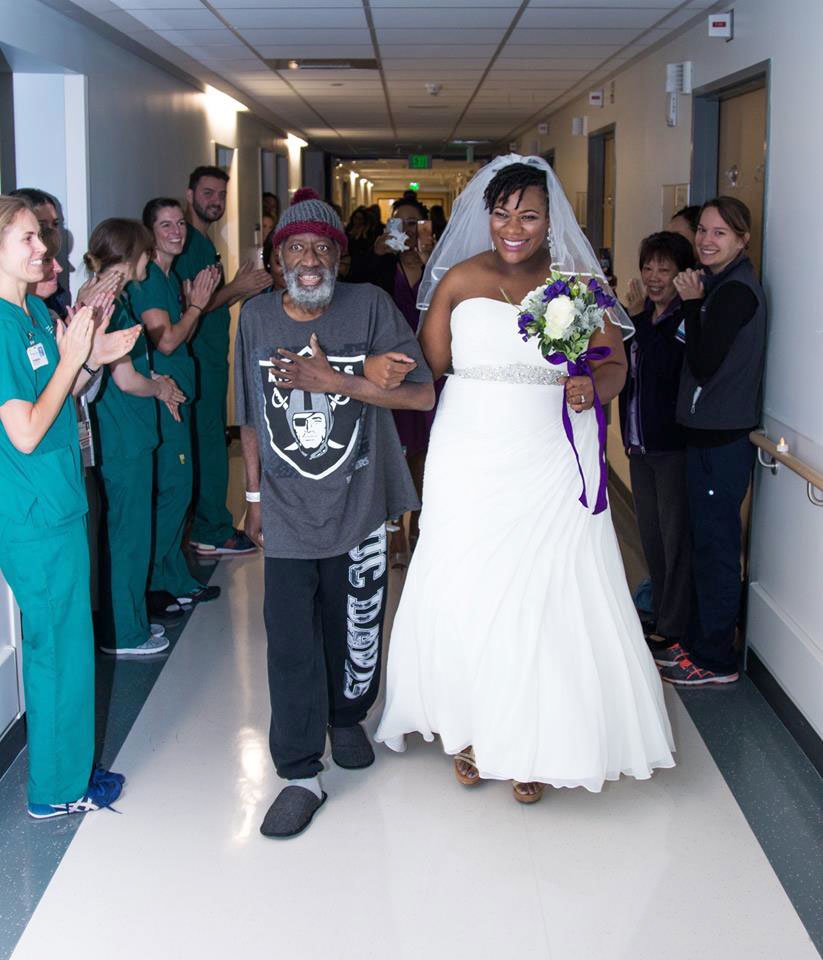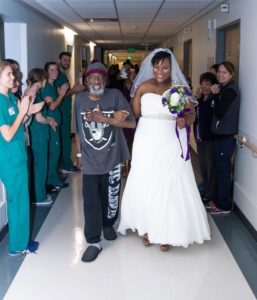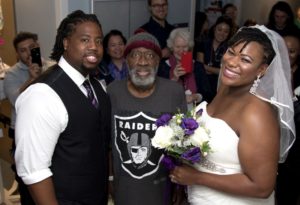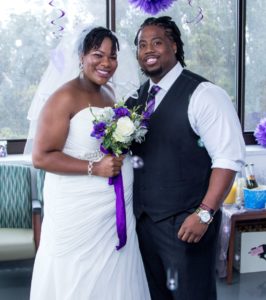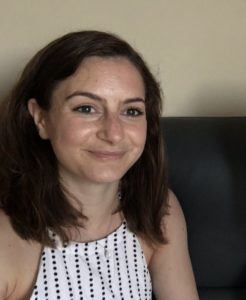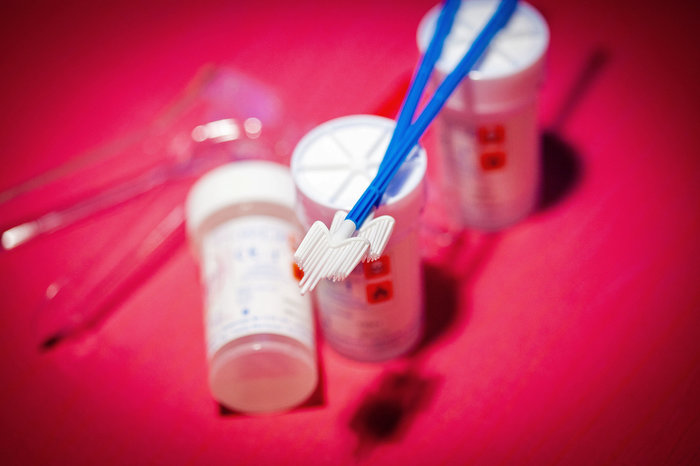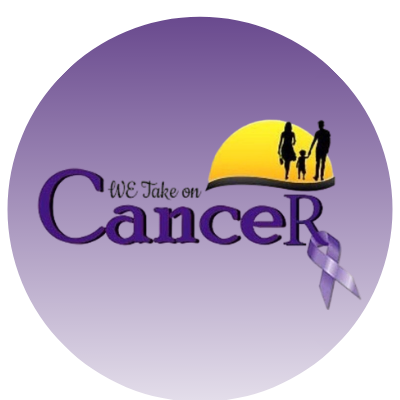Heading Title
It can be hard for physicians to follow current thinking of experts on medical care. It must be exponentially harder for the public to make sense of it. Recently, the United States Preventive Services Task Forcechanged its recommendation on prostate cancer screening from a D (that is, don’t do it) to a C (discuss it with your doctor).
Although there seemed to be a lot of coverage of this announcement in the news media, and a fair amount of excitement, there are two things men should know. First, it’s a good thing that recommendations change over time; second, this change isn’t as big a deal as you might think.
The task force is made up of volunteers who are experts in primary care and preventive medicine. They are charged with evaluating the benefits and harms of preventive services (like prostate cancer screenings) to determine whether they should be widely performed. An “A” recommendation from the panel can be interpreted as an endorsement that everyone get a service because there’s a high certainty of a substantial benefit. A “B” recommendation is similar, but means that there’s only a high certainty of a moderate net benefit.
A “D” recommendation advises patients not to get a service because there’s a moderate certainty of no net benefits, or because the harms from a service outweigh the benefits.
Five years ago, the task force gave prostate cancer screening a D recommendation because there are real harms from over-diagnosis of the disease. Over-diagnosis leads to unnecessary treatments, and a newly discovered cancer could lead to no symptoms or harm over the patient’s lifetime. The treatments for prostate cancer, including radiation and prostatectomy, have high levels of adverse events. About 75 percent of all the men treated will have impotence, incontinence or both.
Further, at the time of the 2012 statement, there appeared to be little evidence that screening with a prostate-specific antigen blood test (PSA) reduced prostate cancer mortality. With no clear benefit, and significant harms, a D recommendation seemed appropriate.
Many disagreed. They argued that there were benefits to screening, and that those would be shown through better research. They were, to some extent, correct. In 2014, researchers for the largest randomized controlled trial to date published an update of an earlier study, and it showed that offering men screening reduced their relative risk of dying of prostate cancer over 13 years by 21 percent. Another studypublished in late 2012 showed that offering screening reduced the relative risk of metastatic disease by 30 percent.
It’s important to note that these changes apply only to men 55 to 69. For men 70 and older, the harms outweigh the benefits, and the screening recommendation remains a “D.”
I’m sure the nuances of A, B, C and D recommendations can be confusing to the public. They can also make it seem as if experts are constantly changing their minds. But this is how we want our experts to react: When new evidence is found, it should be added to older evidence to change our thinking when appropriate.
On the other hand, caution is still warranted when thinking about whether a man should be screened for prostate cancer. Although there is now evidence of a benefit, and its relative importance seems impressive, its absolute effects are not as persuasive.
According to these studies, a 55-year-old man has about a 0.6 percent chance of dying of prostate cancer over the next 10 to 15 years. If he is screened, that chance goes down to 0.5 percent. That’s how you get almost a 20 percent relative reduction, but an absolute reduction of only 0.1 percentage points.
Further, if a man is screened, the studies show that there’s about a 25 percent chance he will have a positive PSA test at some point. Of all men screened, about 10 percent will be found to have prostate cancer, and about 8 percent will be treated with surgery or radiation.
So out of 1,000 men screened, 80 will eventually have surgery or radiation. Three will avoid the spread of cancer to other organs. One or two will avoid death from prostate cancer. Sixty will have urinary incontinence and/or impotence. Many men will probably still think the risks outweigh the benefits.
One of the biggest concerns with screening is that too many men are treated for slow-moving prostate cancers that might never really pose a risk to their health. A new approach, known as active surveillance, offers an alternative. Instead of receiving immediate surgery or radiation, men with lower-risk cancer are watched more closely and receive more frequent PSA tests and biopsies. If the cancer progresses, they receive interventions. About 40 percent of men with lower-risk disease were treated this way from 2010 to 2013, up from 10 percent of men from 2005 to 2009.
The goal of health care, as always, should be to maximize the benefits of care while minimizing the harms. With this most recent recommendation, the preventive services task force recognizes that PSA screening now has more evidence to support its upside. There’s still a large downside, though, and the ways in which we respond to positive screens should try to minimize interventions.
This article originally appeared on NYTimes.com by Aaron Carroll
Photo:Pixabay
Originally posted by NCI Staff on cancer.gov
By tracking the spread of breast cancer cells in mice, researchers have identified two proteins that mayregulate the movement of breast cancer cells into and out of bone marrow.
A protein called E-selectin may allow breast cancer cells to enter certain regions of the bone marrow, and another protein, CXCR4, may help breast cancer cells remain within the bone, according to the study results.
The findings may provide a “molecular framework” for understanding the spread, or metastasis, of breast cancer cells to bone, Trevor Price, Ph.D., of the Duke Cancer Institute and his colleagues wrote in Science Translational Medicine on May 25. The researchers also suggested that the findings could lead to new strategies for preventing and treating bone metastases in women with breast cancer.
Exploring Mechanisms of Metastasis
In humans, breast cancer can recur in patients more than a decade after the disease has been treated. In most of these cases, the cancer has metastasized to bone.
“Our study addresses a difficult clinical problem—the disease can recur in patients who thought they had been cured of breast cancer years earlier,” explained Dorothy A. Sipkins, M.D., Ph.D., of the Duke Cancer Institute, who led the research.
Past work had suggested that these late recurrences may be caused by the emergence of breast cancer cells that had previously spread to the bone—known as micrometastases—but had remained dormant. But the mechanisms involved in the spread of breast cancer to bone are poorly understood.
E-selectin is an adhesion protein—a protein that helps cells bind to other cells and to their surroundings—that is present on the surfaces of cells lining blood vessels. Because the protein has been associated with the homing of hematopoietic stem cells into the bone marrow at certain regions, or niches, where it is highly expressed, the researchers investigated whether breast cancer cells could co-opt E-selectin to also mediate their movement into the bone.
Using a technique known as high-resolution, real-time microscopy, the investigators followed the movements of individual breast cancer cells in mice containing human breast cancer cells that metastasize to bone. “This technology allows us to visualize the breast cancer cells within the bone marrow and can get down to a single-cell resolution,” explained Dr. Price.
The researchers found that breast cancer cells express multiple proteins that may bind to E-selectin. Through experiments with mice, the researchers showed that breast cancer cells spread preferentially to blood vessels that expressed E-selectin and that interactions between the breast cancer cells and E-selectin allowed the breast cancer cells to enter bone.
“E-selectin is a sticky protein expressed by certain blood vessels that serves as a portal into the bone marrow,” explained Cynthia Dunbar, M.D., of the Hematology Branch at the National Heart, Lung, and Blood Institute, who was not involved in the research. “The bone marrow seems to provide a protective home for breast cancer cells.”
The cells traveled to specific areas within the bone marrow known as perisinusoidal vascular regions, the researchers found. These niches may be “a protective haven against chemotherapy,” the authors wrote. Once inside the bone marrow, the breast cancer cells may remain there for extended periods of time and be protected from attack by chemotherapy and other treatments.
The researchers then showed that the receptor protein CXCR4 may help to anchor breast cancer cells within the bone marrow. When they exposed the mice to a drug called plerixafor (Mozobil®), which blocks the CXCR4 receptor and is used to mobilize stem cells into the bloodstream so they can be harvested for stem cell transplants, some dormant breast cancer cells were forced out of the bone marrow.
In additional experiments, the researchers used an E-selectin inhibitor, called GMI-1271, to prevent some breast cancer cells circulating in the bloodstream from entering the bone marrow. This drug is already being evaluated in human clinical trials for leukemia and multiple myeloma as a way to push tumor cells out of the bone marrow into the blood, where they might be killed more easily by chemotherapy, according to Dr. Dunbar.
“These findings suggest that combining a CXCR4 inhibitor to force the cells out of their niches and an E-selectin inhibitor to prevent metastasis to the bone marrow could help trap the cells in the vasculature, where they could be killed with chemotherapy,” noted the editors of Science Translational Medicine in a summary accompanying the article.
Focusing on Next Steps
The researchers will continue to investigate the mechanisms uncovered in this study using the mouse model and tissue from patients with breast cancer. “We are interested in seeing whether disconnecting breast cancer cells from an environment that harbors them in a clinically dormant state could expose the vulnerabilities of these cells,” said Dr. Sipkins.
Future studies, added Dr. Price, will also look at what happens to breast cancer cells that are mobilized out of the bone marrow.
More research is needed to ensure that breast cancer cells forced out of the bone marrow do not travel through the bloodstream to another organ, such as the brain, noted Dr. Dunbar. The current study, she continued, will inform the direction of future research.
“The more we know about how breast cancer cells spread to bone, the more we will be able to explore ways to prevent and treat bone metastases,” she said.
Throughout her life, Jackie, 38, saw many relatives on her father’s side of the family be diagnosed with and die from breast or ovarian cancer. Her paternal grandmother was diagnosed with breast cancer in her 30s, and later passed away from ovarian cancer in her 40s, while two paternal aunts also died from breast or ovarian cancer.
Jackie discussed her family history with her doctor, who recommended she seek genetic counseling. Her genetic counselor knew that her risk of breast and ovarian cancer could be passed down through either parent’s side of the family, and recommended Jackie get genetic testing which is how she learned she is positive for a BRCA1 gene mutation.
Jackie and her genetic counselor discussed the options that were available to manage her risk, which included regular screening for breast cancer and preventive surgeries. Jackie decided to have her ovaries removed. She continues to undergo regular breast cancer screening. Jackie feels empowered by the roadmap she has created to manage her risk, and is hopeful for a bright future for herself and her 4-year-old daughter, Amelia.
Jackie lives in Maryland and works as a medication safety evaluator. She enjoys hiking and spending time with her daughter, who loves science and princesses.
Share Jackie’s Story on Social Media
Jackie’s 4-year-old daughter motivated her to be proactive about her health, and was one of the biggest reasons why Jackie learned her breast cancer risk: #BringYourBrave
Ride sharing giant Lyft is offering cancer patients free rides—or at least effectively free for riders—to and from their treatments in 10 major U.S. cities, including Los Angeles, Philadelphia, Houston, Miami, Las Vegas, Cincinnati, Denver, St. Louis, and Atlanta.
The rides are part of an existing Lyft collaboration with the American Cancer Society (ACS), which will be covering the cost of the rides.
“The best treatment in the world can’t help someone if they can’t access it,” said Megan Wessel, a vice president at ACS, when the initial project was launched last fall. “Access to care is a big problem in our country, therefore transportation programs and partnerships like the one we are launching with Lyft in Miami-Dade County are vital for these patients to get the treatments they need and deserve.”
Patients seeking the free rides can coordinate with the American Cancer Society by calling 800-227-2345 or visiting www.cancer.org. ACS will then use the Lyft Concierge service to arrange a ride.
However, those who want to use the service are encouraged to book the trips several days in advance, and reminded that it can only be used for cancer-related medical appointments.
The American Cancer Society partnership isn’t Lyft’s only foray into medical transportation. (Competitor Uber also has a number of similar initiatives.) Last May, the Blue Cross Blue Shield Association (BCBSA) teamed up with Lyft to help people in isolated areas covered by certain Blue Cross Blue Shield insurance plans get free rides to the hospital.
“Many Americans live in areas where medical care is beyond the reach of walking, biking or public transportation. As a result, they struggle to access critical health care services, even when they have health insurance,” said Dr. Trent Haywood, BCBSA chief medical officer and president of the BCBS Institute, in a statement at the time. “We are committed to addressing issues like transportation that are inextricably linked to health outcomes, yet can’t be tackled through health care resources alone.”
Written By:Sy Mukherjee
Image: Stock Catalog
This article was originally posted on fortune.com
A mammogram at 40 may no longer be enough to combat breast cancer. The American College of Radiology and the Society of Breast Imaging are now recommending that women as young as 30 get a risk assessment — such as a genetic test — to determine what kind of formal cancer screening they need.
The new guidelines were announced in early April as a way to encourage early detection among younger women with a higher risk for breast cancer.
“It’s pretty obvious that the current recommendations [of getting a mammogram at 40] are missing a lot of women who are developing breast cancer at a young age,” says Dr. Elizabeth Morris, chief of breast imaging at Memorial Sloan Kettering Cancer Center.
Though breast cancer in younger women is relatively rare — approximately 7 percent of women diagnosed are younger than 40 — survival rates for younger women are lower, according to the National Institutes of Health.
“[For] women who come in with a lump and have never had a mammogram because they’re under the recommended age group, the question is: If we had screened earlier could we have caught it?” says Morris, who is also an investigator with the Breast Cancer Research Foundation.
According to ACR, women in high-risk categories may need more aggressive screening before turning 40. Those with genetic mutations such as BRCA1 and BRCA2 — Angelina Jolie has the former — may need annual MRI screenings. African-American and Ashkenazi Jewish women are also statistically more likely to get breast cancer at a younger age, and may require supplemental screening.
Genetic tests are one of the major ways women can see if their risk may call for more aggressive screening, Morris says, echoing advice from Mary-Claire King, Ph.D., who discovered the BRCA1 genetic mutation. Morris recommends speaking with your doctor about risk assessments and at-home genetic testing kits, such as Color Genomics, which uses saliva samples to determine a person’s risk for selected hereditary cancers.
“The more we know about genetics of cancer, the more we can be able to predict which women will be at increased risk and [recommend] more screening and prevention, rather than trying to catch it and treat it once it’s further down the line,” Morris says.
Here are additional resources for genetic counseling and testing available to women in New York City, according to the Breast Cancer Research Foundation:
- The National Society of Genetic Counselors’ website (NSGC.org) offers a searchable directory for finding a genetic counselor by state and specialty. To find one who specializes in cancer genetics, choose “cancer” under the “types of specialization.”
- InformedDNA (InformedDNA.com) is a network of board-certified genetic counselors providing this service by phone. They can also help you find an expert in your area for face-to-face genetic counseling.
- The National Cancer Institute (Cancer.gov) provides a list of health-care providers offering genetic counseling and testing, as well as information on the certification of the health-care providers listed.
- The FORCE help line (FacingOurRisk.org, 866-288-RISK, ext. 704) can connect you with a volunteer board-certified genetic counselor who can answer general questions about genetic testing and hereditary cancer and help you find a genetic counselor.
- Color Genomics’ $249 physician-ordered at-home test (Color.com) uses saliva samples to determine a person’s risk for select hereditary cancers. The company will then arrange a call with a board-certified genetic counselor to discuss next steps.
Article written by Lauren Steussy and originally appeared on nypost.com
Image:Shutterstock
Vieneese and Douglas Stanton originally planned to have a big wedding in April 2018, but they knew they had to make some changes after getting the heartbreaking news that Vieneese’s father had been given just a few weeks to live.
“My dad has acute leukemia … [doctors] were constantly giving us negative reports about my dad’s health so my fiancé — who’s now my husband — and I really wanted my dad to be a part of [the wedding],” Stanton tells PEOPLE of her father, who was diagnosed with the disease in February.
“My dad was really excited when we got engaged,” Stanton says. “Then to find out he wouldn’t make it to our original wedding day was sad for us, so we wanted to speed the process up a little bit.”
On Nov. 16, Vieneese, 27, and 30-year-old Douglas, of Richmond, California, wed at the University of California, San Francisco Medical Center, surrounded by friends, family and nurses. Vieneese says the hospital wedding was a total surprise to her father, Preston Rolan, 64.
“My dad didn’t even know we were planning this. I was working alongside the nurses and my bridal party,” she tells PEOPLE, noting that the nurses decorated the hospital, bought a cake and even got Rolan a suit. “I actually was hiding from him in the hospital! He takes walks around the hospital in the morning so they decided to take him for his walk and then I turned the corner on him.”
His reaction was priceless, she says.
“He was completely surprised. He really was about to start crying. He was bragging. He was telling all the nurses, ‘This is my daughter. This is my daughter!’ ” Vieneese tells PEOPLE.
“With the help of his nurses, we were able to actually have the wedding at the hospital so that he could walk me down the aisle. We wanted him to be able to share this experience with us.”
A “Beautiful” Ceremony
Photos of the ceremony showed Vieneese sporting a wide smile as she and her father walked arm-in-arm down the hospital’s halls. The nurses and guests stood on the sidelines, clapping and snapping photos.
“It was amazing. It was beautiful. I was smiling the entire time,” she tells PEOPLE, adding that hospital staff provided a lot of food and even a professional photographer. “I was surprised just like my dad was because. I didn’t know it would be that big.”
Vieneese and Rolan have always been close. Rolan moved in with the couple earlier this year when he became ill. Even after Rolan entered the hospital, Vieneese was sure to include him in every key moment of her life, including news that she’s pregnant.
“I’m five months pregnant. It’s a baby girl,” she tells PEOPLE. “When we found out, I took balloons to my dad’s hospital room and kind of did a gender reveal with him. He was so excited.”
Doctors held off putting Rolan into hospice care so he could attend Vieneese’s wedding. But now that the ceremony is over, Vieneese says she’s preparing to say goodbye to her father.
“He’s someone who always gives me wisdom, he is always making sure I make the right choices,” Vieneese says through tears. “I’m definitely going to miss his wisdom over all. He was full of humor, so I will miss laughing with my dad. There’s so much about his personality I will definitely miss.”
This article was originally appeared on people.com and written by: Char Adams
Images: Ed Photography
Corporate giants take extraordinary measures to protect their intellectual property rights. They often resort to unethical and/or illegal tactics against small unsuspecting businesses in an attempt to force them to cease using their trademarks or risk threatened litigation. For the majority of small businesses faced with this situation, a court room battle is not a viable option because defending lawsuits can be extremely costly. Other bullying tactics frequently employed by corporate giants include efforts to extract license payments or attempts to force co-existence agreements. For the past year, Crystal Jordan, owner of WETakeOnCancer™ has been battling these very tactics against her own Goliath, the University of Michigan Board of Regents (“UM”). Well, little did UM know, Ms. Jordan was not going down without a fight.
FACTS OF THE CASE: THE BATTLEFIELD
On November 30, 2016, UM instituted a suit before the U.S. Patent and Trademark Office (“USPTO”) Trial & Appeal Board (“TTAB”) seeking to prevent Ms. Jordan’s trademark from registering. UM’s basis for bringing suit was that the marks were confusingly similar (trademark standard for infringement), and that UM was first to use the mark (UM priority date: March 2015 and Ms. Jordan’s priority date: January 2015). At the same time, UM was trying to overcome other refusals issued by the USPTO. The USPTO refused their application on various grounds, but for the sake of time, the primary issue was that UM was not using their mark as a “trademark.” In order to overcome this refusal, UM had to submit new documentation and certify (statement made under oath) that the new documents exhibiting proper trademark use were in use prior to their November 15, 2016 application submission. Well, it would appear that UM had no evidence to support their claims of use, because UM, by and through their counsel, submitted several website images and certified (under oath) that the submitted images were in use prior to their application submission. However, it is our firm belief that the submitted pages did not exist until sometime after February 6, 2017. In Ms. Jordan’s answer to their complaint, we submitted approximately 58 pages of archived web images dating back to March 2015 to bolster our claim that the use alleged and certified by UM did not occur until after the USPTO refused UM’s application and after the suit against Ms. Jordan was initiated – THEY LIED UNDER OATH. UM contends that their application has nothing to do with the suit against Ms. Jordan. Nothing can be further from the truth, because if UM was unable show the proper use to obtain approval, THEN SUCH A REFUSAL WOULD BE SUFFICIENT TO SHOW THAT UM HAD NO USE TO SUPPORT A CLAIM AGAINST Ms. Jordan. Accordingly, they fabricated this evidence to avoid an admission that UM had no proof and force Ms. Jordan to continue exhausting financial resources and litigating the matter before the TTAB.
THE LONE WOLF: DAVID HAS NO ALLIES
The #DetroitFreePress expressed a keen interest in Ms. Jordan’s story. When the #FreePress reached out to UM for a comment, UM told the reporter that, “ We told Ms. Jordan that she could continue to use her trademark.” I told the #FreePress that such an offer was indicative of a large corporation’s hurbris, the nerve! UM cannot give Ms. Jordan the rights to use her own “stuff.” I explained to the reporter that such an offer was akin to me taking a portion of Lenny Kravitz’s song, then telling Lenny that he can use the rest. Trademark rights do not work that way. The first to use the mark in commerce has priority, and since Ms. Jordan was first, UM should be seeking permission from her, not the other way around. I went on further to explain that UM’s offer was hardly gratuitous because 1. UM must first have rights to give and 2. UM is the party in the position to dominate the market; and therefore, the offer was not mutually beneficial. So, for Ms. Jordan to accept such an offer would undermine her rights as a trademark owner. The reporter just didn’t get it – his reply was, “Well, I thought they were trying to take it from her.” I rebutted with, UM is very much trying to “take it from her.” Their position has essentially been either you let us use it or we’re going to force her to fight it out in court.
Needless to say, #Detroit FreePress decided not to run the story. Up until that point, the #Michigan paper thought they had a hot story, then all of a sudden, no interest. The facts didn’t change. What happened during the time that they had the hot story and the time that UM returned their call for a comment? 🤔 Unfortunately, this is just an uphill battle that is all too common for the small business – no money, no voice, and no allies. It would appear that no one cares about the David’s, Money talks!
The lack of a platform proved to be discouraging, but Ms. Jordan hasn’t given up her fight. Currently, UM and Ms. Jordan are preparing for their discovery demands, exchange of evidence to support their cases. This journey continues to be a hard-fought battle, but Ms. Jordan is committed to seeing it to the end.
It’s sad to say, but situations like this are typical for small businesses. We cannot allow the corporate giants to continue getting away with undermining and stealing the intellectual property rights of small businesses. Small businesses work very hard to create and develop their intellectual property with significantly less resources than their larger counterparts. So, for the corporate giants to swoop in and capitalize off of the blood, sweat, and tears of these thriving businesses, it’s just reprehensible. For many years, the Goliaths have been successful with their bullying tactics, because they know that the Davids of the world cannot afford to battle it out in court.
It’s worth the fight! If it wasn’t, UM wouldn’t have stooped so low. #PROTECTYOURBRAND
TO BE CONTINUED…
Share this story with your friends and family who are small business owners and entrepreneurs. Encourage them to protect their brand. Don’t let the Goliaths take advantage and bully them into submission.
DON’T BE #BULLIED INTO SUBMISSION
#trademark #trademarks #ip #intellectualproperty
#trademarkbully #trademarkbullies #stopthebullies #stopbullying #antibullying #staystrong #fightingcancer #fightingforherrights
#WETakeOnCancer™ versus #takeoncancer
#UM #UniversityofMichigan #UM #Umich #GoBlue #bully
Written by: Dayna C. Cooper, Esq.
Photo Image: Catholicteacherresources.com
“The plane had just landed when I felt the rush of blood. I stood up from my seat, and a heavy and immediate bleed soaked my trousers. They were covered in it, right down to the knees, and I was shrouded with embarrassment. Young and humiliated – I was only 22 at the time – I stood in the passport queue for 40 minutes with my coat tied around my waist, contemplating what had happened.
When I was finally able to retreat to a toilet, where I threw my trousers in the bin, I cried. I hadn’t been sexually active for several months but the bleed was so heavy the only explanation I could come up with was that I had been unknowingly pregnant with my ex-boyfriend’s child, and had suffered a miscarriage. In that moment, I was devastated. I was still heartbroken over the relationship, and it felt gut-wrenching to stand there, alone and covered in your own blood, wondering if you’d just lost a baby you never even knew you had.
At no point did the incident make me think about cancer, although it wasn’t the first time I’d had issues with bleeding. Months before, I’d gone to the GP after noticing I’d been bleeding during sex. I was examined and found to have an eroded cervix, which can happen to women with high levels of oestrogen over a prolonged length of time. They assumed this was to do with being on the pill, but on reflection it must have been linked to the fibroid the doctors believed they had discovered in my uterus a year earlier. A fibroid is a very common, benign, and usually harmless lump of tissue, and although it was slightly surprising because usually women over 30 get them, I wasn’t concerned about it. I’m generally not much of a worrier, and tend to underplay health issues.
My periods had grown slightly heavier in the lead up to the incident on the plane, but it wasn’t until that happened that I felt compelled to go back to the doctor. They confirmed I hadn’t miscarried, but refused to re-scan me to check everything was okay with my fibroid. Because I was young, I got the feeling they thought there wasn’t much reason to worry too extensively about my gynaecological health, and instead they put my heavy bleed down to stress. I told them I hadn’t been stressed. Now I was stressed, because I wanted answers and I wasn’t getting them.
The weeks rolled on, and my periods became unmanageably heavy. I was having to set alarms during the night to change my sanitary wear, I was unable to exercise during my week-long period, and it was beginning to rule my life. In January 2016 I started to feel dizzy, light headed and tired. My words started to jumble, and I was unable to keep my eyes open by 2pm. I went to my GP and found I was severely anaemic. My doctor finally ordered scans, and by this point they confirmed I now had two fibroids, which needed removing.
I was finally getting taken seriously, and surgery was ordered. It took 8 months for the procedure to get booked in, but when it eventually came around, I didn’t for one moment expect they’d find what they did.
After removing what they’d previously assumed was a fibroid, doctors realized what I actually had was an extremely rare uterine tumor. Actually, I had two. And although they’d managed to remove one, the other was embedded deep in the wall of my womb, and wasn’t removable by surgery. I would need a complete hysterectomy, which would leave me infertile at the age of 24.
I couldn’t believe I had cancer. Apart from bleeding, I generally was fit and healthy. I ate well and exercised 5 or 6 times a week. I had abs and could hold my body weight like it was nothing. How could I, me, have cancer?
When I found out, my mind went into a weird place. It was like I was there, hearing what they were saying, but at the same time I wasn’t present. I was numb and distant. But the reality of it hit me like a ton of bricks when my clinical nurse specialist told me I would need a hysterectomy. All I’d ever wanted was children – lots of children, I wanted a busy house full of noise and chaos – but in that moment, I suddenly realised everything I’d ever wanted for myself and my future had been taken away. I came out of blurry shock mode and into the room, and I cried. I didn’t really know what to do from there.
Following my diagnosis, I spent hours on end in waiting rooms and I couldn’t help but notice I was the youngest person there by decades. The only young women around me were going to the women’s hospital because they were pregnant. I’d sit there, watching pregnant women come in with their toddlers, full of excitement and expectation, and my heart would break every time. I wished they could understand from my perspective how lucky they are. Having children seems like the most natural thing in the world, and that makes it easy to take it for granted.
I still have ovaries – my womb and cervix were removed in the hysterectomy I had earlier this year – which means when my time comes I could technically use a surrogate and IVF to have a family. But thinking about the future is a difficult task. I don’t ever think ahead anymore. I don’t even think ahead to next month; just the next immediate task or day of relevance.
I don’t know what’s in store for me, and I don’t even know what I want it to be anymore, because any conceivable life for me is now a plan B. The permanence and loss of control is unIike anything I’ve ever had to face before, and it’s smothering. I guess ignoring the future and keeping my mind on the present helps me put off my pain. It will come one day and I can’t ignore it forever, but for now I’ve had enough to deal with and I’m just trying to be happy.
I’ll let future Lydia worry about being infertile. I’ve lost two years of my life to this illness, feeling miserable and tired and unable to do the things I want to do. It’s time for me to make up for that and enjoy a few more years of my twenties before I face the struggle of working out how I’m going to be a mum, and the difficulty I’ll have to face to make it happen.”
This article originally appeared on cosmopolitan.com by Lydia Brain
Main Image-Getty
Women ages 30 to 65 may decide how often they want to get screened for cervical cancer depending on the test they choose, according new draft recommendations for cervical cancer screening from the U.S. Preventive Services Task Force. Testing every three years requires a Pap smear, and testing every five years requires a test for human papillomavirus (HPV), the virus that causes nearly all cervical cancers.
“A woman going to her provider for a visit would want to talk with her doctor about the last time she was screened, what type of screening she had, which one to have next and what the timing of that should be,” says Maureen Phipps, chair of obstetrics and gynecology at the Warren Alpert Medical School of Brown University in Providence, R.I., and a member of the task force. The draft recommendations update the 2012 USPSTF recommendations.
Every year in the US, nearly 13,000 women develop cervical cancer and just over 4,000 die from it, according to the American Cancer Society. “We really want to emphasize that cervical cancer is a devastating disease and that screening is very important,” Phipps says. “We want to catch it at an early stage so we can begin treatment.”
Cervical cancer screening is one of the greatest success stories in cancer prevention history: widespread screening cut the cancer’s incidence and mortality in half over three decades. An estimated 2.3 women per 100,000 died from the disease in 2011, compared to 5.6 women per 100,000 in 1975. Screening currently saves more than 4,000 lives a year, the American Cancer Society estimates.
Both the Pap test and the HPV test are done on a sample of cells collected from the cervix. The Pap test (named for the scientist who pioneered the technique) looks for abnormal cell growth that may indicate cancerous or precancerous conditions. The HPV test looks for types of the virus that can cause cancer in women and men.
The USPSTF is an independent panel of unpaid experts who review existing evidence for preventive measures, such as disease screenings and counseling services, to create national evidence-based recommendations. The recommendations often influence what services and medications insurance companies will pay for.
“We encourage public comment because we want to be sure we get it right,” Phipps says. The public comment period runs from September 12 through October 9. Then the task force will decide whether to adopt the draft recommendations or issue a revised version of them.
Cervical cancer screening recommendations differ by age, and the USPSTF is only recommending a change for middle-aged women. Previous recommendations remain in place:
- Cervical cancer screening should not begin until at least age 21 regardless of sexual history, unless a person has an HIV infection or another immunocompromising condition.
- People ages 21 to 29 should not receive an HPV test, but should receive a Pap test every three years.
- People over age 65 do not need screening unless they fall into a high risk group, such as an inadequate history of negative screening, a history of high-grade dysplasia or prenatal diethylstilbestrol (DES) exposure.
If adopted, the new USPSTF recommendations would more closely align with guidelines from the American College of Obstetricians and Gynecologists (ACOG), the American College of Physicians (ACP) and similar organizations. The main difference is that those organizations recommend the Pap test every three years or co-testing — a Pap with an HPV test — every five years for people ages 30 to 65. The USPSTF is the first to include a recommendation for an HPV test without the Pap.
One HPV test is currently FDA-approved as a stand-alone cervical cancer screening tool. It can detect 14 strains of the virus, including HPV 16 and 18, which account for 70 percent of all cervical cancers.
“Most of the value of co-testing is from the HPV test because it’s specific —when it’s negative, it’s really negative — and it’s very sensitive, so if you have a positive test, we’re not going to miss people who have pre-cancer or cancer,” says Kevin Ault, an assistant professor of OB-GYN at the University of Kansas Medical Center. “We’ve known for at least a couple decades that the Pap smear by itself misses some women with precancerous change. Some women have negative Pap smear but do have something, so we added the HPV test to catch it.”
But a positive HPV test does not guarantee a person will develop cervical cancer. HPV is extremely common: about 79 million people have it at any given time, and nearly all sexually active people contract it at least once. Most infections clear on their own. But certain strains carry a higher risk for cervical cancer. It takes 10 to 30 years for an HPV infection to develop into cancer, though, so testing more often than once every five years would not catch cancer any earlier and may lead to unnecessary interventions. The HPV test is not recommended for screening younger women because the virus is so widespread that its use would likely lead to overtesting and overdiagnosis.
“As we go further down in the age range, you’re going to find a lot of infections that probably never will grow up to be cervical cancer,” Ault says. “You’re going to scare women to death, and they’re going to have a lot of extra tests and surgery at a young age that may not be necessary.”
Another concern about the HPV test is stigma, Ault says. With his patients, he explains what HPV test results mean (and don’t mean) before women have one so he can answer questions and clear up misconceptions. A positive test will most likely lead to retesting, plus a Pap smear 12 months later and/or subtyping to see if the infection is a high-risk strain.
If a positive test accompanies an abnormal Pap smear, the physician does a colposcopy, looking at the cervix with a scope. If a woman has precancerous cells, several treatment options exist.
“Once we’ve treated you, and your HPV test is negative, you’re back to a normal risk,” Ault says.
Ault expects the HPV test to become more routine, but said it typically takes three to five years to change clinical practice. A rapidly evolving understanding of the disease, however, has led to frequent, sometimes inconsistent changes to screening guidelines. Guidelines from all groups — USPSTF, ACOG, ACS, American Society for Colposcopy and Cervical Pathology (ASCCP), American Society for Clinical Pathology (ASCP) and Society of Gynecologic Oncology (SGO) — are very similar, but all are more complex than the previous standard.
“It wasn’t that long ago that annual Pap smears were an option, and then we’ve changed those guidelines every few years,” Ault says. “It’s been hard to stabilize clinical practice because we’ve changed so frequently. You can imagine how confusing it is for patients.”
The danger of that confusion is missed screenings, particularly among those with low health literacy or limited access to health care.
“We still have to get women into these screens,” Ault says. “We have to figure out how to reach those groups if we’re really going to drive down cervical cancer rates in this country.”
Image:Getty
